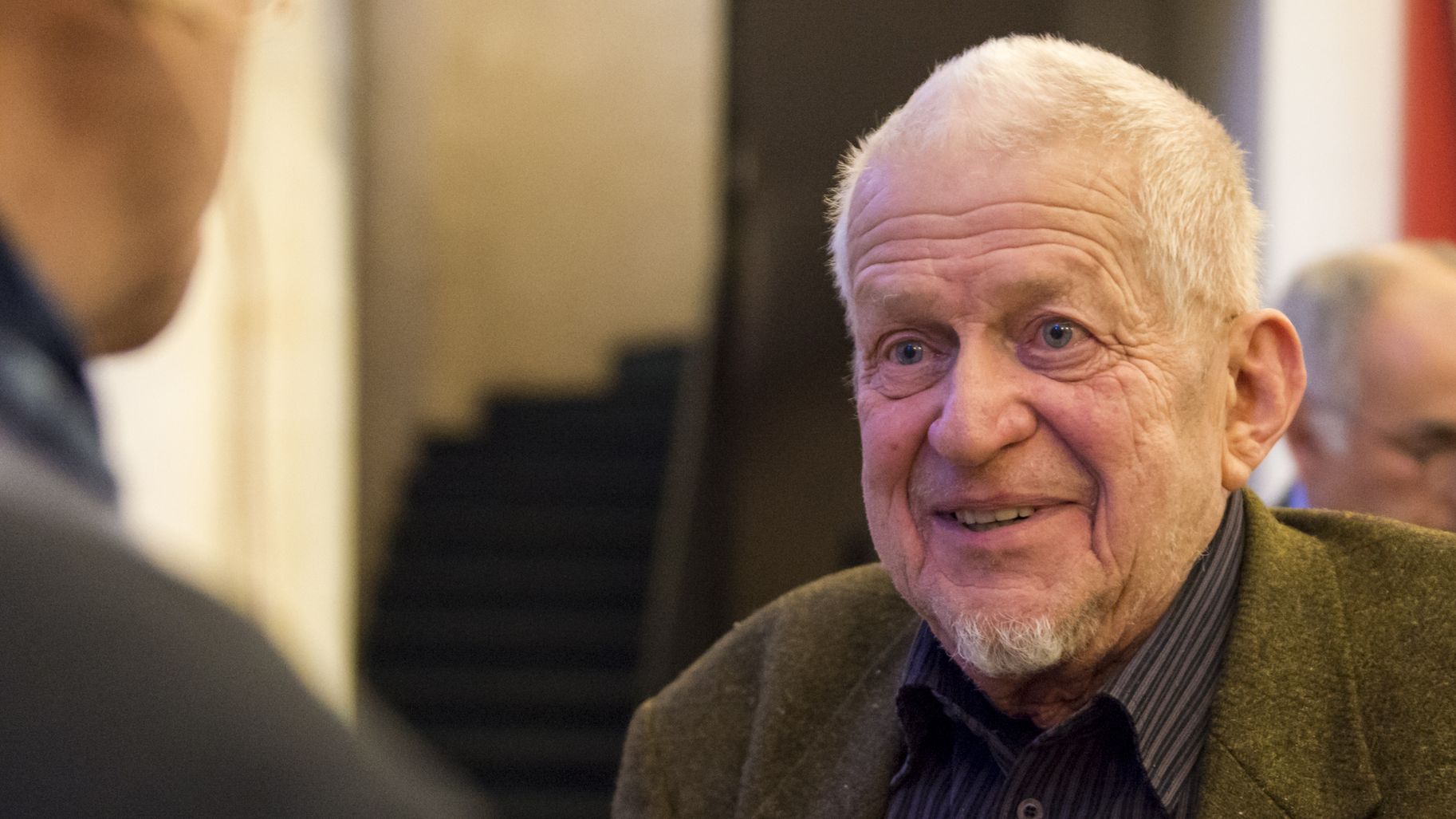Maurice Nivat, pioneer of computer science
Date:
Publish on 29/01/2020

Born in 1937, Maurice Nivat passed the entrance examination to the École Normale Supérieure in 1956. Henri Cartan, director of mathematics at the time at the School, offered him the chance to work at the new CNRS Computing Centre, the Institut Blaise Pascal. Maurice Nivat learnt Lisp, Algol... and became a computer scientist, even though the word did not yet exist-it was created at the beginning of the 1960s.
In 1961, Maurice Nivat became an assistant at the Faculté des Sciences de Paris. He met Marcel-Paul Schützenberger who introduced him to coding theory. He then learned language theory, and taught it to his younger colleagues Jean Berstel, Jean-François Perrot and Michel Fliess.
From 1965 to 1967, Maurice Nivat was a senior lecturer at Grenoble then, from 1967 to 1969, in Rennes. In 1967, he defended his doctoral thesis and obtained the post of Lecturer at the Faculté des Sciences de Paris in 1969. He also discovered the semantics of programming languages.
It was at the beginning of the 1970s that, in parallel to his work, Maurice Nivat started devoting a lot of time and energy to building research teams, at IRIA and at Paris 7, both newly created institutions.
In 1970, Schützenberger introduced Maurice Nivat to the IRIA, organised into projects. In 1971 Maurice Nivat created a “Formalised Semantics of Programming Languages” project. The project included Philippe Flajolet, Jean-Marc Steyaert, Bruno Courcelle, Gérard Huet, Gérard Berry, and also for a short period Jean-Jacques Lévy. The subject quickly received reinforcements from other young researchers who were returning from the USA: Jean-Marie Cadiou, Gilles Kahn and Jean Vuillemin. This project, renamed “Theory of Programming”, lasted until 1979 -but he continued to advise Jacques-Louis Lions, then his successor, Alain Bensoussan, until 1996.
Maurice Nivat also launched the Écoles de Printemps d'Informatique Théorique in 1973, which played a crucial role in the constitution of a veritable network of theoretician computer scientists. These Schools served in particular to foster considerable interaction between the Paris 7 group and the group from building 8 of the IRIA.
At the university, Maurice Nivat contributed to the creation of the LITP (Laboratoire d'Informatique Théorique et Programmation) in 1975 of which he was the co-director until 1985, with Jacques Arsac then with Bernard Robinet. He was also responsible for the first compulsory Computer Science course taught to the students at Ecole Polythechnique in 1975.
On the European stage, Maurice Nivat played an essential role in the creation of the EATCS (European Association for Theoretical Computer Science) in 1972, alongside Jaco de Bakker, Corrado Böhm and Mike Paterson. The association organised the first International Colloquium on Automata, Languages and Programming (ICALP) at the IRIA. In 1976, Maurice Nivat founded the journal Theoretical Computer Science (TCS) for which he was the chief editor for almost 25 years.
In 1982, Maurice Nivat was charged by Jean-Pierre Chevènement and Alain Savary, ministers of Research and Education respectively, with writing a report on the electronic sector, entitled “Knowledge and Know-How in Information Technology”. Laurent Fabius, who had become Minster of Research and Industry, asked Maurice Nivat to chair the Conseil Scientifique du Programme Mobilisateur de la Filière Electronique (Scientific Council of the Computer Science Sector Mobilising Programme). He then implemented the Programmes de Recherche Coordonnés (PRC) (Coordinated Research Programmes, which were generously funded for several years and gave a fantastic boost to French Computer Science research. The following PRCs also came into existence:
Maurice Nivat was appointed corresponding member of the Académie des Sciences in 1983.
Relieved in 1985 of his heavy national responsibilities, Maurice Nivat continued his research at Université Paris-Diderot and at the École Normale Supérieure de Lyon, taking an interest in new subjects, in particular pixellisation and discrete tomography.
Called upon once again by the Minister responsible for Research to chair the Observatoire de la Recherche en Informatique (IR Research Think Tank) in France, he spent a large amount of energy in 1993 and 1994 coordinating the work of around twenty or so researchers and manufacturers, all that for a report which was eventually hastily buried... Maurice Nivat has always regretted that politicians and major manufacturers did not deploy sufficient effort to create a powerful national or European IT industry.
Maurice Nivat retired in 2001.
Maurice Nivat made it his mission to convince the academic world and the public authorities of the necessity of considering Information Technology as a science in the full sense of the word, and of building its foundations, and not just a simple tool at the service of other disciplines. He constantly tried to raise the awareness of the scientific community as well the deciders of the economic or social challenges of Information Technology. Maurice Nivat was a passionate man, with a (very) strong personality. He was endearing, and throughout his career had an enormous workload, had an amazing imagination, untiring curiosity, and a very sturdy sense of humour!
A pioneer of French and also European theoretical Computer Science, a researcher renowned throughout the world, initiator of large federating programmes, Maurice Nivat occupies a unique place in the history of his discipline.